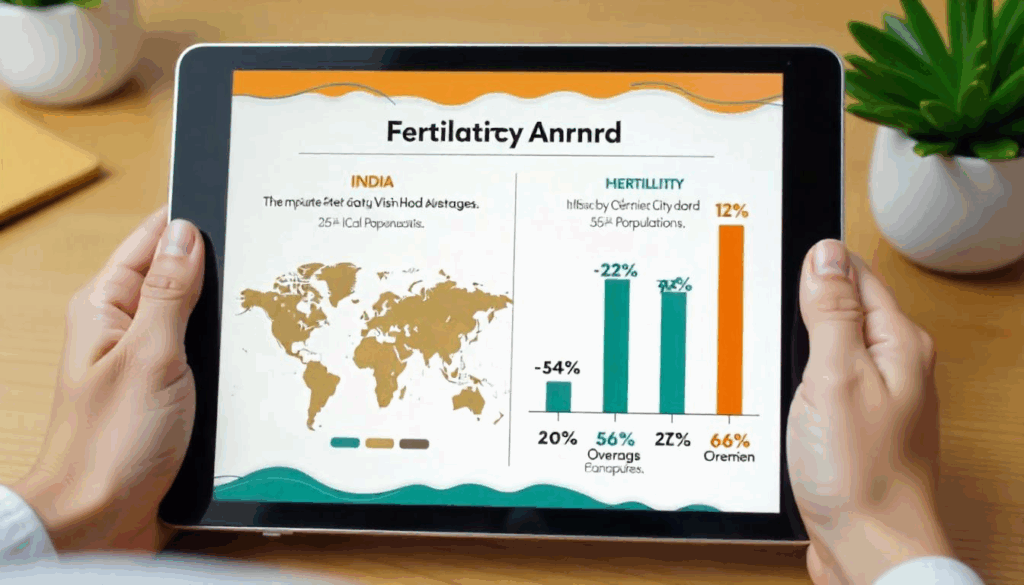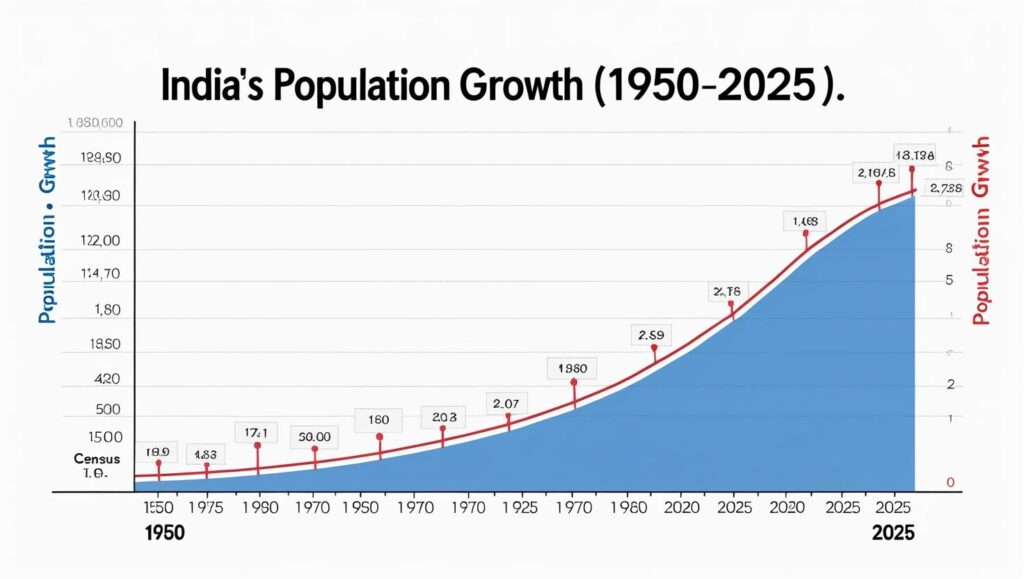India, home to over 1.4 billion people, is set to remain the world’s most populous country throughout the 21st century. While population growth signals economic potential and a vast labor force, its rapid and unchecked rise has raised significant challenges. From overcrowded cities to strained resources, the problem of population increase in India is no longer a distant concern—it’s a pressing national issue demanding immediate attention.
What is Population Growth?

Population growth refers to the increase in the number of individuals in a particular region over a period of time. In India, this growth has been exponential over the last few decades, fueled by multiple socio-economic and cultural factors.
Current State of Population in India
As of 2025, India’s population exceeds 1.4 billion, surpassing China as the most populous country. The annual growth rate hovers around 0.8%, with certain states like Uttar Pradesh and Bihar showing even higher rates.
Despite family planning initiatives and awareness campaigns, the population growth in India remains a critical concern affecting infrastructure, education, health, and employment.
Causes Behind the Population Increase in India

1. High Birth Rate
India’s fertility rate, though declining, remains higher than many developed nations. A lack of awareness, accessibility to contraception, and socio-cultural pressure to bear children contribute to this issue.
2. Declining Death Rate
Improved healthcare services and advancements in medical technology have significantly reduced the mortality rate, increasing life expectancy and population longevity.
3. Lack of Education and Family Planning
Illiteracy, especially among women, and limited access to family planning services contribute heavily to population growth.
Effects of Overpopulation in India

1. Pressure on Natural Resources
The increasing population leads to excessive consumption of natural resources like water, land, and energy.
2. Unemployment and Underemployment
More people means more competition for limited jobs, resulting in a rise in unemployment rates.
3. Housing and Urban Crowding
Overpopulation results in urban crowding and slum development in major cities.
4. Healthcare and Education Strain
Public healthcare and educational institutions become overburdened, affecting quality and accessibility.
Environmental and Economic Impact
Population increase directly affects the environment and economy:
Environmental Degradation: Deforestation, pollution, and waste generation are on the rise.
Economic Strain: Though a large population offers a big workforce, overpopulation leads to poverty and inadequate public services.
Government Policies and Measures
India has implemented several policies since the 1950s:
National Family Planning Program: World’s first such program, launched in 1952.
Two-Child Policy Proposals: Discussed and implemented in states like Assam and Uttar Pradesh.
Awareness Campaigns: Promoting birth control, female education, and delaying early marriage.
Solutions to Control Population Growth

1. Education and Awareness
Improving education, particularly for women, is the most effective long-term solution. Educated women are more likely to understand the importance of family planning.
2. Access to Contraceptives
Providing affordable and accessible contraceptives, especially in rural areas, can reduce unintended pregnancies.
3. Delayed Marriages
Encouraging late marriages indirectly reduces the fertility window, contributing to lower birth rates.
4. Economic Incentives
Offering incentives for smaller families could encourage voluntary participation in birth control.
Conclusion
The problem of population increase in India is a multifaceted issue that affects every aspect of society—from education and employment to environment and healthcare. While the challenges are enormous, so are the opportunities to address them through education, empowerment, and policy reform.
By fostering awareness, strengthening policies, and empowering communities, India can steer toward sustainable growth. The road is tough, but not impassable.
